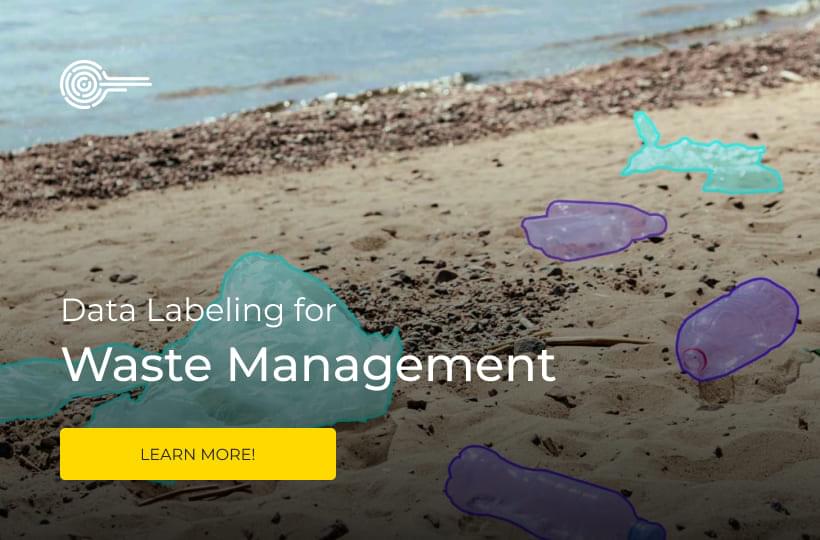Complete Guide to LLM Data Annotation: Best Practices for 2025

In 2025, data annotation continues to serve as a foundational element in developing large language models (LLMs), directly impacting their accuracy, reliability, and alignment with human intent. As LLMs are increasingly applied across specialized industries and high-stakes environments, the demand for high-quality, context-aware annotation has grown significantly.
Key Takeaways
- High-quality dataset curation is essential for building accurate and domain-relevant LLMs.
- Scalable annotation workflows directly influence outcomes in transformer model training.
- Practical instruction tuning requires nuanced prompt-response evaluation and diverse data.
- A robust RLHF workflow depends on expert human feedback and consistent quality checks.
- Combining real, synthetic, and programmatic data boosts model performance across tasks.

Introduction to LLM Data Annotation
LLM data annotation shapes how large language models understand, generate, and align with human language across diverse domains. Unlike conventional NLP labeling tasks, annotating for LLMs requires a more nuanced approach that considers raw data quality, prompt clarity, output relevance, and behavioral alignment. At its core, annotation for LLMs serves several interconnected functions that contribute directly to model capability:
- Prompt-Response Pairing. Carefully constructed prompts paired with ranked or labeled outputs enable practical instruction tuning and help steer model behavior.
- Feedback for RLHF Workflow. Human evaluators assess model generations against criteria like helpfulness, honesty, and harmlessness, providing the training signals for reinforcement learning from human feedback.
- Task-Specific Labeling. Fine-grained annotations for sentiment, intent, logic, or style are crucial for downstream applications and for customizing transformer model training pipelines.
- Dataset Curation and Filtering. Selecting, cleaning, and balancing source data ensures training inputs align with use case goals and minimize bias or noise.
- Evaluation and Benchmarking. Human-annotated datasets are also used to evaluate model performance and generalization during and after training.
The Evolution of Data Annotation for Machine Learning and NLP
Early-stage NLP systems relied on simple rule-based tagging or crowd-labeled datasets focused on token-level tasks like part-of-speech tagging and named entity recognition. As statistical models gave way to neural architectures, annotation shifted toward larger corpora with sentence-level classification, intent detection, and multi-turn dialogue.
With the rise of instruction tuning and RLHF workflows, annotation has become more dynamic and human-centric. Annotators are now asked to label data and evaluate reasoning, detect subtle errors, rank completions, and simulate user interactions across diverse domains. Dataset curation has also become a strategic endeavor, involving rigorous filtering, deduplication, and balancing for training efficiency and ethical safety.
Key Benefits of Data Annotation for AI Training
- Improved Model Accuracy. Labeled data provides clear learning signals, reducing ambiguity and improving task prediction quality.
- Support for Instruction Tuning. High-quality prompt-response pairs and ranked outputs are essential for fine-tuning models on task-specific instructions.
- Reliable Dataset Curation. Annotated datasets help filter out low-quality or biased content, ensuring training data is representative and relevant.
- Faster Iteration and Deployment. Well-structured annotation workflows streamline evaluation cycles, enabling quicker model updates and validation in production.
- Customization Across Domains. Domain-specific annotation allows models to adapt to technical, legal, medical, or creative contexts with greater accuracy and nuance.
Best Practices for LLM Data Annotation
- Define Annotation Objectives Early. Clear goals for model behavior and use cases guide the creation of consistent guidelines and help avoid vague or conflicting labels.
- Use Multi-Level Annotation Schemes. Combine surface-level tagging (e.g. sentiment, correctness) with deeper assessments (e.g. reasoning quality, factual accuracy) to capture the full spectrum of model performance.
- Incorporate Human-in-the-Loop Review. Expert reviewers are critical in providing high-quality signals during RLHF workflows and validating edge cases.
- Maintain a Feedback Loop Between Annotators and Model Teams. Ongoing collaboration ensures that annotation criteria evolve alongside model behavior and training objectives.
- Leverage Synthetic and Programmatic Data Where Appropriate. Augmenting datasets with LLM-generated samples, followed by human verification, can accelerate dataset curation without compromising quality.
- Ensure Annotation Consistency Through QA Layers. Implement layered reviews, spot checks, and conflict resolution protocols to minimize variance across annotators.
- Document Guidelines and Changes Thoroughly. As projects scale, maintaining versioned annotation manuals helps ensure stability and transparency across iterations.
- Prioritize Domain Expertise for Specialized Tasks. In healthcare, law, or finance, qualified subject-matter experts should perform or review annotations to preserve data fidelity.
Annotation Generation Techniques with LLMs
Large language models are increasingly used to assist or automate parts of the annotation process, reducing human labor while accelerating dataset curation. These models can generate draft labels, simulate user queries, score outputs, and even rank responses, making them valuable tools for bootstrapping or scaling annotation workflows. Common techniques include:
- Zero-shot and Few-shot Labeling. LLMs generate annotations using task descriptions or minimal examples, which are helpful for classification, summarization, or intent tagging.
- Prompt-Based Scoring. Models rate or compare multiple responses to a prompt, aiding RLHF workflows by providing preliminary rankings before human judgment.
- Synthetic Data Generation. LLMs create new prompt-response pairs that expand the diversity of training sets, especially when real-world data is scarce or sensitive.
- Style and Tone Conversion. For tasks like rewriting, simplification, or localization, models can generate multiple stylistic variations that humans then select from or refine.
- Heuristic-Driven Filtering. LLMs can pre-screen or exclude low-quality data based on rules or semantic thresholds, streamlining dataset curation.
- Instruction Refinement. Annotators can use LLMs to rephrase or stress-test prompts, improving clarity before instruction tuning begins.
In high-stakes use cases, every LLM-generated annotation should pass through a human-in-the-loop QA process. When applied thoughtfully, these hybrid approaches can dramatically improve the speed and scale of annotation without sacrificing the integrity needed for trustworthy LLM training.

Innovative Generation Methods
Annotation generation techniques with large language models have transformed how datasets are created and refined for transformer model training, instruction tuning, and RLHF workflows. By taking advantage of the capabilities of large language models (LLMs) to produce candidate labels, generate diverse prompt-response pairs, and assess output quality, organizations can significantly speed up dataset curation while maintaining high standards.
Approaches such as zero-shot and few-shot labeling enable models to annotate data with minimal examples, supporting rapid expansion into new tasks or domains. Prompt-based scoring and ranking help prioritize outputs for further human review within RLHF workflows, increasing annotation efficiency. Synthetic data generation broadens training sets where real data is limited, and style or tone conversion allows for flexible content adaptation to specific use cases. Heuristic-driven filtering streamlines dataset curation by pre-selecting high-quality inputs, and instruction refinement improves prompt clarity ahead of fine-tuning phases.
Despite these advances, human-in-the-loop oversight remains essential to ensure annotation accuracy and alignment with model goals. Innovative strategies like iterative refinement, cross-model collaboration, active learning, and context-aware annotation further enhance the quality and relevance of annotated data.
Quality Response Engineering
This process directly supports transformer model training and instruction tuning by providing clear, high-quality examples that guide the model’s learning and behavior. In the context of the RLHF workflow, quality response engineering involves human evaluators assessing outputs against criteria such as helpfulness, factual correctness, and safety, which informs reward models and fine-tuning steps. Practical response engineering also requires ongoing dataset curation to identify gaps or inconsistencies in model performance and to generate targeted annotation tasks that address those issues. Techniques like multi-turn dialogue simulation, output ranking, and error analysis help create a feedback loop between annotators and model developers, continuously improving response quality.
Developing Instruction & Response Frameworks
Instruction and response frameworks define how prompts are structured, how responses are expected to be generated, and what criteria determine output quality, directly influencing transformer model training and instruction tuning outcomes. Meanwhile, response frameworks establish standards for evaluating completeness, correctness, tone, and safety, vital components in the RLHF workflow. Effective frameworks also facilitate systematic dataset curation by aligning annotation guidelines with use case requirements, enabling annotators to produce reliable, reproducible labels. Incorporating feedback loops between annotators, data scientists, and model trainers helps refine these frameworks, adapting to evolving model capabilities and deployment contexts.
Instruction Diversity Strategies
Diverse instructions can include paraphrasing prompts, varying complexity levels, incorporating different linguistic styles, or presenting tasks from multiple perspectives. This variety supports a richer dataset curation process, ensuring that models learn to handle real-world ambiguity and user intent more effectively. In the context of the RLHF workflow, instruction diversity also aids human evaluators in assessing model behavior across different conditions, helping to identify weaknesses or biases.
Enhancing Response Quality
Enhancing response quality is tightly integrated with transformer model training, instruction tuning, and the RLHF workflow, where continuous improvement depends on high-quality annotated data and precise feedback. Key methods for boosting response quality include rigorous dataset curation to eliminate noisy or misleading examples, detailed reasoning steps and factual accuracy annotation, and systematic error analysis to uncover standard failure modes. Human-in-the-loop evaluation remains critical, providing nuanced judgments that guide reward models and fine-tuning decisions. Incorporating diverse instruction strategies helps models generalize better and avoid repetitive or biased responses.
Summary
Data annotation remains vital in advancing large language models through transformer model training, instruction tuning, and RLHF workflows. In 2025, practical annotation goes beyond simple labeling to include nuanced prompt-response pairing, human-in-the-loop feedback, and strategic dataset curation. Leveraging LLMs themselves to assist annotation accelerates data generation but requires careful human oversight to maintain quality. Best practices emphasize clear guidelines, multi-level evaluation, and domain expertise to produce high-quality datasets that directly impact model alignment and performance. These integrated approaches form the foundation for building scalable, precise, and trustworthy AI systems tailored to evolving real-world needs.
FAQ
What role does dataset curation play in LLM data annotation?
Dataset curation ensures that training data is clean, balanced, and relevant, directly impacting transformer model training quality. Effective curation helps reduce bias and improves model generalization.
How does instruction tuning benefit from data annotation?
Instruction tuning relies on high-quality prompt-response pairs and detailed annotations to teach models specific tasks and desired behaviors. This targeted tuning enhances model adaptability to diverse user instructions.
Why is human-in-the-loop important in the RLHF workflow?
Humans in the loop provide critical feedback on model outputs, helping to refine reward models and guide fine-tuning. This process improves response quality and aligns models with ethical and functional standards.
What are standard annotation generation techniques using LLMs?
Techniques include zero-shot and few-shot labeling, synthetic data generation, prompt-based scoring, and heuristic filtering. These methods accelerate dataset curation while maintaining annotation precision.
How does instruction diversity improve LLM performance?
Instruction diversity exposes models to varied prompt styles and complexities, preventing overfitting and boosting robustness during transformer model training and instruction tuning. It also helps models better handle real-world ambiguity.
What is the purpose of developing instruction and response frameworks?
These frameworks establish consistent guidelines for prompt creation and response evaluation, ensuring clarity and alignment in annotation tasks. They support effective dataset curation and model fine-tuning workflows.
How can response quality be enhanced in LLM training?
Enhancing response quality involves rigorous dataset curation, detailed annotations, and human feedback within the RLHF workflow. Continuous error analysis and diverse instructions further improve output relevance and safety.
Why is multi-level annotation critical for LLMs?
Multi-level annotation captures surface features like sentiment and deeper aspects such as reasoning and factual accuracy. This comprehensive labeling enriches instruction tuning and transformer model training.
What challenges arise when using LLMs for annotation generation?
Challenges include maintaining annotation accuracy, avoiding model biases, and ensuring human oversight. Balancing automation with quality control is essential for effective dataset curation.
How do iterative refinement and active learning contribute to annotation workflows?
Iterative refinement improves annotation quality through repeated reviews, while active learning prioritizes uncertain samples for human labeling. Both enhance efficiency in transformer model training and RLHF workflows.

